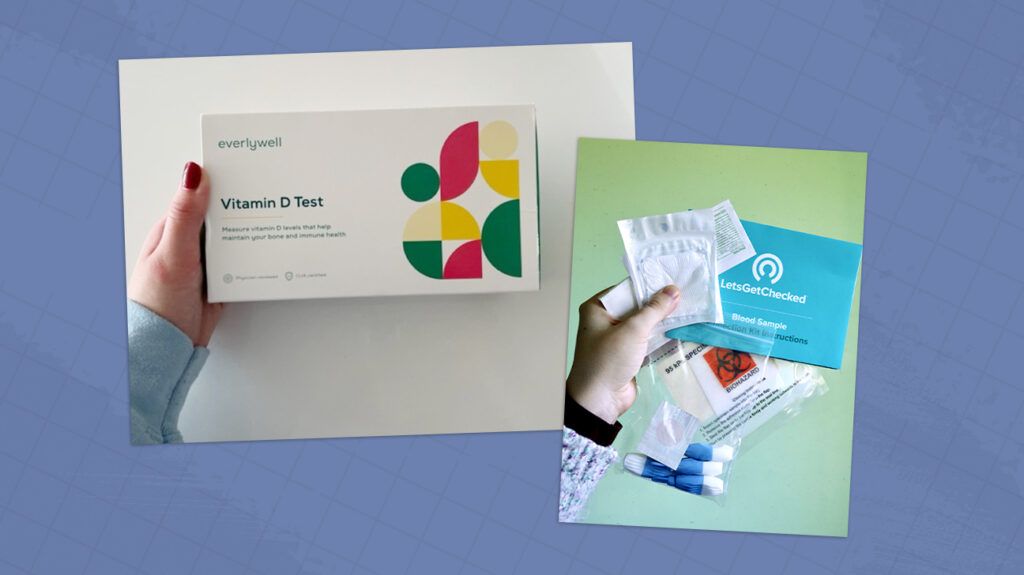This article explains how we test at-home test kits, what goes into our testing process, and our medical vetting process.
At-home test kits, which are sometimes known as direct-to-consumer at-home health tests, are popular tools for people to monitor and manage their health at home. Individuals use these testing kits to test for hormone imbalances, vitamin deficiencies, sexual health issues, and more.
We thoroughly vet every at-home test before including it in our content. In addition, our editors regularly try at-home test kits to ensure the products we feature are user-friendly and live up to manufacturers’ claims.
All the products and services we feature on Medical News Today undergo rigorous medical vetting. Our editors are trained to pick only the best options for our readers. They regularly update content to ensure any products or services that no longer pass our vetting process are removed.
Before recommending any at-home test, our team examines their:
- medical credibility
- test quality
- brand reputation
- business practices
- lab certifications
We will only include an at-home test that has passed our vetting process. Learn more about our approach to content integrity and product selection.
Our testers go through the whole testing process, from purchasing a test to collecting a sample and receiving follow-up support. They look at the following factors.
How wide the test panel is
While some tests only look for one or two nutrients, bacteria, or viruses, others provide larger testing panels that can offer more detailed insight into a person’s health. We note when a test offers more insight — and whether it is testing appropriate metrics — and when it might not provide someone a full picture.
How affordable the test is
Tests often cost over $100. Cheaper tests cost between $50 and $80, which may still not be manageable for everyone. We aim to include tests that offer the most comprehensive panels for affordable prices. We also always make an effort to find ways for people to save money through subscription options or discounts.
How easy it is to collect a sample
At-home test kits typically involve providing a blood, saliva, or urine sample. Providing a blood sample is generally the most difficult option, and people may feel anxious about using a finger prick lancet. We research whether a test uses an appropriate sample collection method, as scientific studies may show that a saliva sample may not be as useful as a blood sample for certain tests.
How quickly users get their results
We know it is important for people to get health test results quickly. When we test products, we assess whether the company delivers on its promise to deliver test results quickly, usually within 2 to 5 days.
Whether the results are easy to understand
Our testers will consider whether they can easily access and understand their results. Generally, people will be able to access their results through their online account with their chosen company, and these results appear as visual graphs or text documents.
Whether users get follow-up support from a healthcare professional
Many at-home testing companies offer guidance from a healthcare professional if someone’s test results are positive for a condition, virus, deficiency, or other health concern. We discuss whether these consultations are free, available quickly, and offered as texts, emails, or calls. We also assess any extra guidance a company offers, such as paid health consultations or information packs on health conditions.
Whether people can use insurance to pay
Most health insurance policies do not cover at-home test kits. We highlight when people can pay with a flexible spending account (FSA) or health savings account (HSA) and when companies offer receipts for potential insurance reimbursements.
We have a panel of seven testers who try at-home test kits for our articles. Meet our most regular and experienced tester below.
Lois Zoppi
- Role: MNT editor
- Testing experience: I have tried a range of at-home test kits from LetsGetChecked.
I have used several at-home tests to measure testosterone, cortisol, vitamin deficiencies, and my sexual health. I have several health conditions with nonspecific symptoms, so health testing can help me get to the bottom of what is going on with my health. I also have regular blood tests at the doctor’s office to manage my conditions.
While the
This is because the direct-to-consumer health testing market has outgrown the existing FDA regulations that were put in place when these tests were only available in small numbers.
The FDA notes that these kinds of tests can lead to an under- or over-treating of certain conditions. They may also lead to unnecessary diagnoses or inappropriate treatment.
People may also change their diet, lifestyle, or medication according to data from at-home tests before reviewing the results with a doctor, which could have serious implications for their health.
In addition to this,
Other risks of at-home testing include:
- the users’ ability to perform the test correctly to get a viable sample
- the damage to samples during shipping
- companies not using certified labs to test samples



